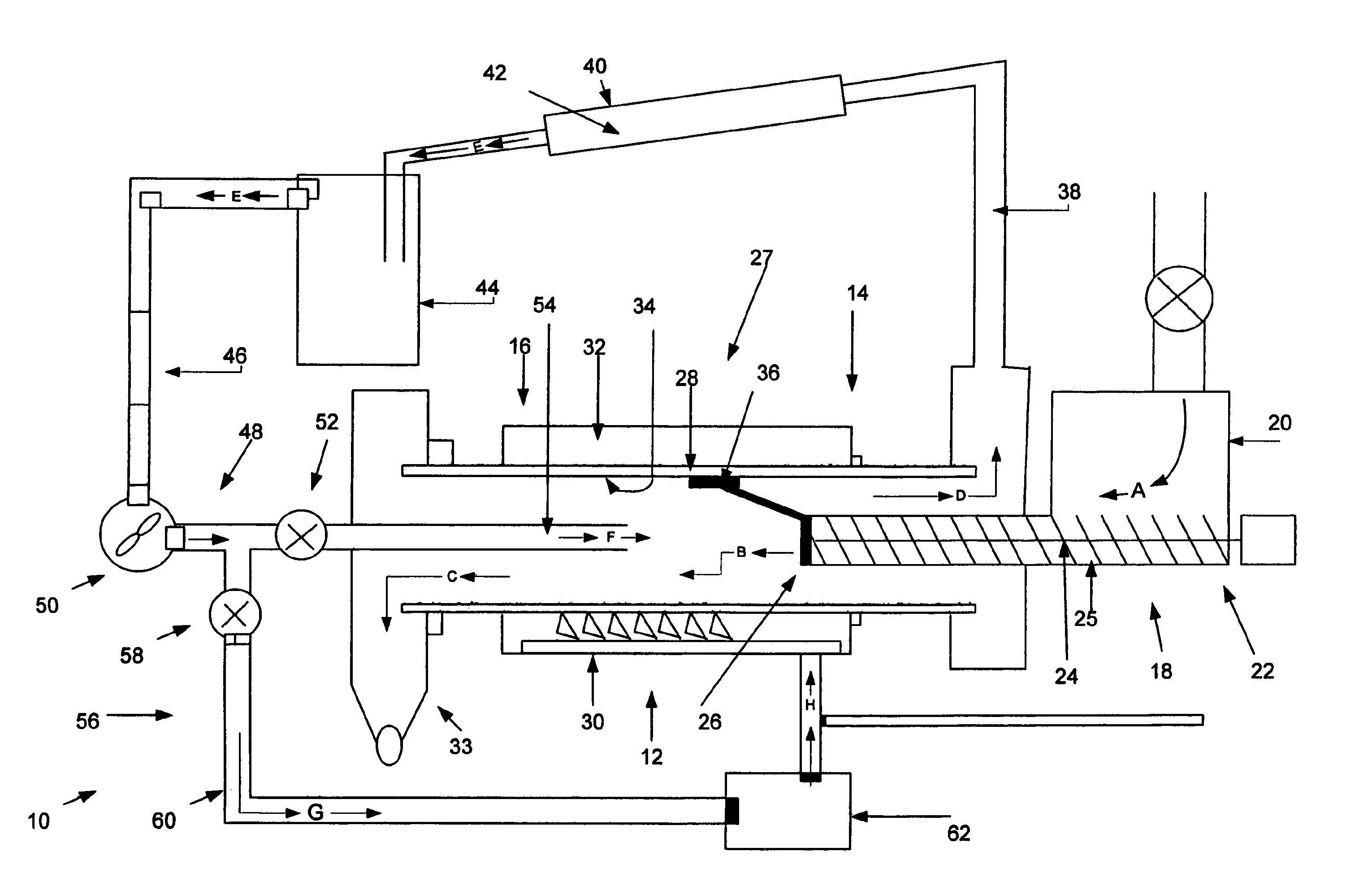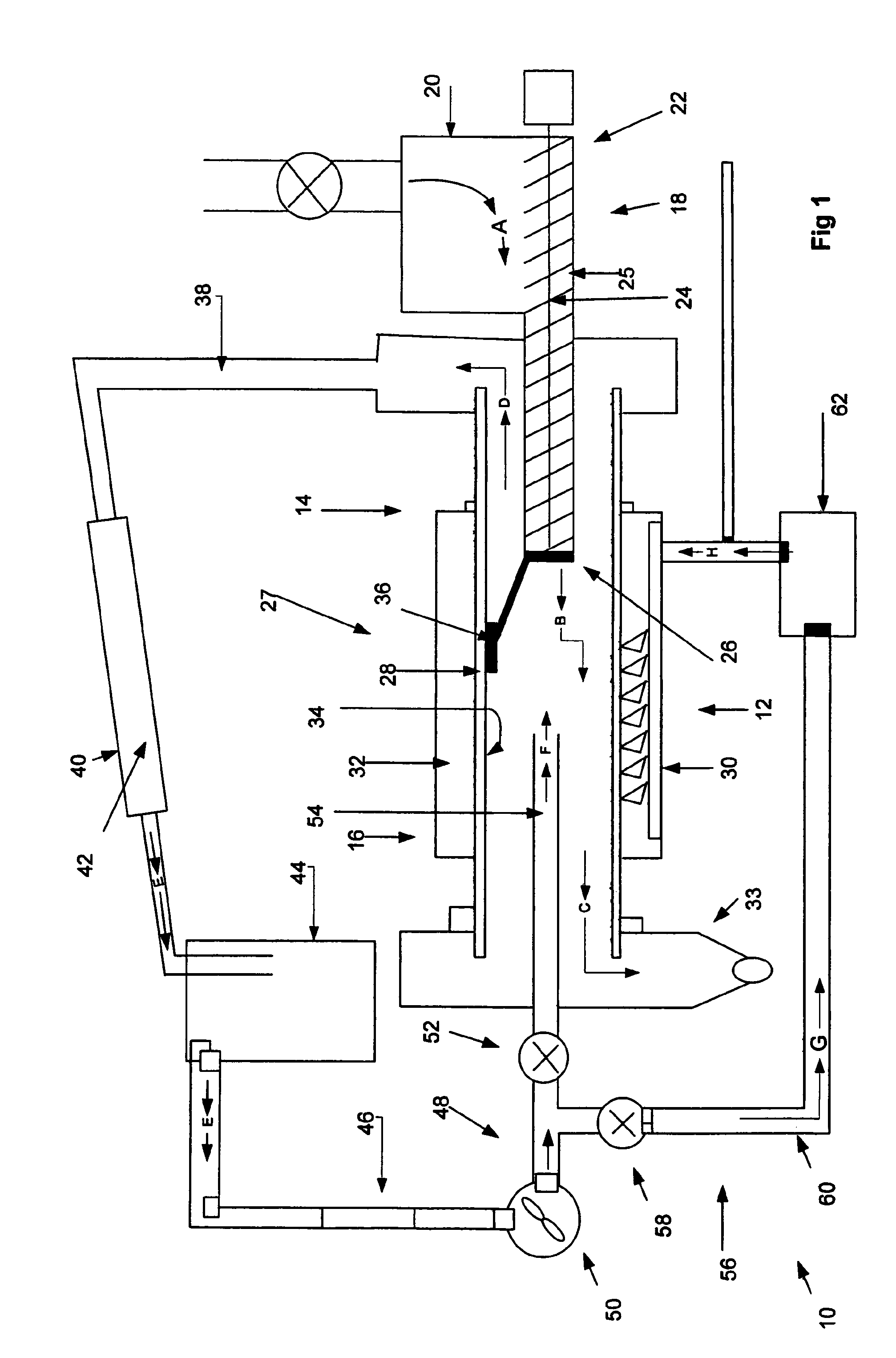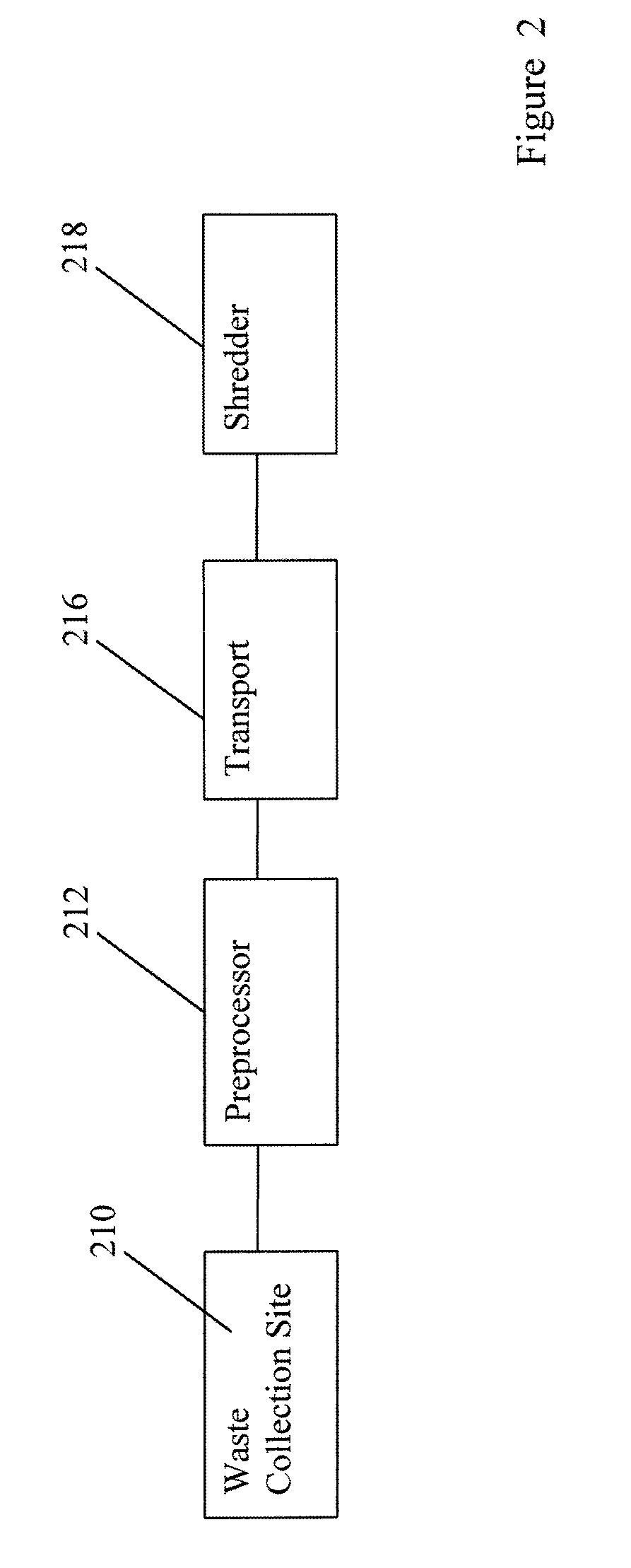System and method for recycling of carbon-containing materials
a carbon-containing material and recycling technology, applied in the field of carbon-containing material recycling, can solve the problems of long-standing disposal problems, substantial reduction of disposal opportunities, and consequent increase of disposal costs, and achieve the effect of increasing the rate of pyrolysis
- Summary
- Abstract
- Description
- Claims
- Application Information
AI Technical Summary
Benefits of technology
Problems solved by technology
Method used
Image
Examples
Embodiment Construction
[0054]FIG. 1 shows a system 10 for recycling carbon-containing material. Examples of such carbon-containing material include, but are not limited to, waste tyres, waste plastics, tyre shred, rubber crumb and animal waste.
[0055]The system 10 includes a heating arrangement, i.e. a pyrolysis reactor, 12 having upstream and downstream ends 14, 16 and a feed arrangement 18 for feeding carbon-containing material into the heating arrangement 12. The feed arrangement 18 includes a feed source 20, such as a hopper, for supplying pieces of carbon-containing material to an input end 22 of a rotatable screw 24 located inside a static feed tube 25. This is indicated by the arrows A.
[0056]In the present invention, the diameter of the carbon-containing particle is from 30 to 300 mm, preferably 40 to 200 mm, and most preferably 50 to 150 mm. The individual pieces of carbon-containing material in the present example have a size in the order of 100 mm by 250 mm and these individual pieces are fed by ...
PUM
| Property | Measurement | Unit |
|---|---|---|
| temperature | aaaaa | aaaaa |
| temperature | aaaaa | aaaaa |
| atmospheric pressure | aaaaa | aaaaa |
Abstract
Description
Claims
Application Information
 Login to View More
Login to View More - R&D
- Intellectual Property
- Life Sciences
- Materials
- Tech Scout
- Unparalleled Data Quality
- Higher Quality Content
- 60% Fewer Hallucinations
Browse by: Latest US Patents, China's latest patents, Technical Efficacy Thesaurus, Application Domain, Technology Topic, Popular Technical Reports.
© 2025 PatSnap. All rights reserved.Legal|Privacy policy|Modern Slavery Act Transparency Statement|Sitemap|About US| Contact US: help@patsnap.com



